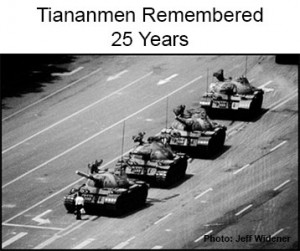The following blog is excerpted from Marlow’s forthcoming book Jazz in the Land of the Dragon.
********************************************
June 4, 2014 people in several parts of the world overtly demonstrated their remembrance of the massacre at Tiananmen Square in Beijing, China that took place on the same day in 1989. In China itself, any overt expression criticizing the Chinese government’s so-called crackdown on “counter-revolutionary” dissidents on June 4 25 years ago was suppressed. There were no news announcements and any reference to that event on the Internet was shut down.
June 4, 1989 in Tiananmen Square was a demonstration of the pro-democracy movement, mostly by university students. The Chinese government could not tolerate this overt expression of the younger generation’s desire for change and reform. It sent in tanks. Hundreds died. The actual number is not known.
I visited Tiananmen Square in the summer of 2006. Its size is mind-boggling. It is filled in places with statuary glorifying the 1949 revolution. It was created as a square for the people. On June 4, 1989 it became a battlefield perfect for tank warfare.
In my forthcoming book Jazz in the Land of the Dragon two Americans—Mary Ann Hurst and Dennis Rea—recount their experience of that time in Chinese history: Ms. Hurst in Shanghai, Rea in Chengdu, the capital of Sichuan province in Southwest China.
Jazz Singer Mary Ann Hurst:
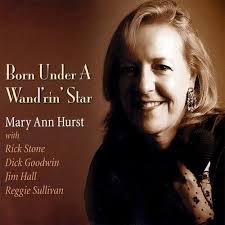 The first time Ms. Hurst was in China was as a student in 1981-82, just five years after the death of Mao and the beginning of the opening of China. She arrived in Shanxi Province in Taiyuan in the mid-central part of China, about 12-16 hours on the train south of Beijing.
The first time Ms. Hurst was in China was as a student in 1981-82, just five years after the death of Mao and the beginning of the opening of China. She arrived in Shanxi Province in Taiyuan in the mid-central part of China, about 12-16 hours on the train south of Beijing.
The second time Hurst went to China was in 1985 as a commercial tour guide for Pacific Delight Tours. She took American tourists over in the summer. And then from 1986 to 1989, she went over every summer with the University of Minnesota. She administered an arts program in Hangzhou. It was the only program in the world at the time that had a study abroad program in China for credit.
The program ended in 1989 because of Tiananmen Square. She described the sequence of events as it affected her:
It was ’89, the night of June 4th. We flew into Japan. We were taking a group in and we were in Japan when Tiananmen Square happened. The television was full of news on what was going on in China, and we couldn’t get out of Japan because they weren’t letting flights into China. Finally there was a JAL pilot who flew us in the next day. There were seven people on a 747 going into China, and my boss let me go in because we had one student who got in there before everyone else did. I went in to get him out.
There were, what they called dazibao, big character posters everywhere. Whenever there’s a tragedy or a death or some huge undertaking in China, they pull out the calligraphers and people make these huge signs out of Chinese characters and hang them from buildings. 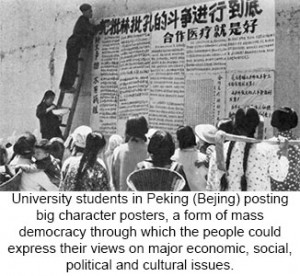 There was calligraphy everywhere hanging from buildings, announcing what was going on in Beijing. This is in Shanghai.
There was calligraphy everywhere hanging from buildings, announcing what was going on in Beijing. This is in Shanghai.
They were saying, ‘Do you believe what Li Peng is telling us about our brothers and sisters in Beijing?’ Li Peng was the leader who allowed the tanks to go into Tiananmen Square. There were people with megaphones on corners in Shanghai—it was amazing—announcing what was going on in Beijing. The whole city of Shanghai was covered with posters like that.
What was the feeling among the people there? Pro‑government? Anti‑government? Neutral?
It was a mix. I think people didn’t know what to think. The TV had constant news coverage of what was going on in Tiananmen, but it was all from the government perspective. A lot of people were getting the news from outside of China in the five-star hotels that had fax machines. That’s why people say that it was really due to this technical revolution of fax machines in hotels that the news got in. People were taking paste pots and taking these faxes from the hotels and copying them and then pasting them on walls all over the city. People could read in foreign news coverage what was happening in their own capital. That was pretty phenomenal to watch.
Rock/Jazz Guitarist Dennis Rea
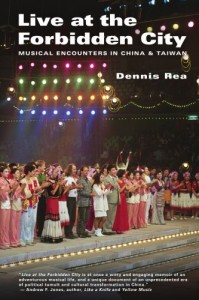 One of the significant revelations of Dennis Rea’s recounting of his travels in China in his book Live at the Forbidden City is that the pro-democracy movement–usually reported as only happening in Beijing, China’s capitol, in June 1989, culminating in the massacre of hundreds of people at Tiananmen Square–actually occurred all over China, particularly of university students. Rea’s description of what happened in Chengdu could easily be a description of what happened in Beijing on June 4, 1989.
One of the significant revelations of Dennis Rea’s recounting of his travels in China in his book Live at the Forbidden City is that the pro-democracy movement–usually reported as only happening in Beijing, China’s capitol, in June 1989, culminating in the massacre of hundreds of people at Tiananmen Square–actually occurred all over China, particularly of university students. Rea’s description of what happened in Chengdu could easily be a description of what happened in Beijing on June 4, 1989.
He writes:
“On April 15 1989, my students excitedly informed me that one-time senior Communist Party leader Hu Yaobang had succumbed to a heart attack. Once pegged to succeed Deng Xiaoping as China’s supreme leader, the relatively liberal Hu had been cashiered by Deng for his tacit support of pro-democracy demonstrations in Beijing and other cities in 1986, earning him martyrdom in the eyes of many students and intellectuals. As the news of Hu’s death spread, spontaneous memorial gatherings materialized in cities throughout China, including Chengdu. This nationwide gesture of respect for the popular Hu was widely viewed as a rebuke to China’s current leadership.”
The classic, literary picture of a college or university student is usually one of many books and little money. Rea’s description of his students in 1989 provide a microcosm of the dramatic economic inequality extant in China at the time, not only among students, but also in the populace generally—a condition that gives rise to the student demonstrations in June 1989:
The benefits of China’s vaunted economic boom certainly did not extend to my students, who led lives of sobering austerity. Three times daily, the young academics would troop down to the campus commissary with their dented tin bowls for meals that made American prison fare seem like the chef’s special at Delmonico’s—grisly meat of indeterminate origin, pale, overcooked vegetables, and a couple of scoops of coarse rice that often concealed shards of tooth-breaking stone. Most of the students wore the same clothes to class every day, quite possibly the only ones they owned. And these were the lucky few that actually gained admission to a university, in a 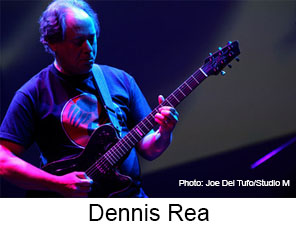 country where less than one percent of the population was privileged to move on to higher study. Even if a student did manage to make it through college, he or she still faced the depressing prospect of working for woefully substandard wages in China’s financially strapped educational system while their budding capitalist peers laughed all the way to the bank. Was it any wonder that demoralized Chinese students would rise up and demand fairness and an end to corruption at their first opportunity?
country where less than one percent of the population was privileged to move on to higher study. Even if a student did manage to make it through college, he or she still faced the depressing prospect of working for woefully substandard wages in China’s financially strapped educational system while their budding capitalist peers laughed all the way to the bank. Was it any wonder that demoralized Chinese students would rise up and demand fairness and an end to corruption at their first opportunity?
June 4, 1989 was the day of the foreign teachers’ annual field trip to the dragon boat races in the small Yangtze River port city of Leshan. Just minutes before they were to board the bus at 10a.m. an American teacher who had been listening to BBC World Service on her shortwave raced up to Rea’s apartment and blurted out the news of the world-shaking massacre at Tiananmen Square. Following, in part, is the BBC report:
Several hundred civilians have been shot dead by the Chinese army during a bloody military operation to crush a democratic protest in Peking’s (Beijing) Tiananmen Square.
Tanks rumbled through the capital’s streets late on 3 June as the army moved into the square from several directions, randomly firing on unarmed protesters.
The injured were rushed to hospital on bicycle rickshaws by frantic residents shocked by the army’s sudden and extreme response to the peaceful mass protest.
The protests began with a march by students in memory of former party leader Hu Yaobang, who had died a week before.
But as the days passed, millions of people from all walks of life joined in, angered by widespread corruption and calling for democracy.
Tonight’s military offensive came after several failed attempts to persuade the protesters to leave.
Throughout the day the government warned it would do whatever it saw necessary to clamp down on what it described as “social chaos.”
But even though violence was expected, the ferocity of the attack took many by surprise, bringing condemnation from around the world.
At a nearby children’s hospital operating theatres were filled with casualties with gunshot wounds, many of them local residents who were not taking part in the protests.
Meanwhile, reports have emerged of troops searching the main Peking university campus for ringleaders, beating and killing those they suspect of coordinating the protests.
Rea’s description of the situation in the center of Chengdu City could just as easily been the story in Beijing:
. . .the crowd has swelled to at least 100,000 citizens in my estimation. We continued to encounter people with frightful wounds, including one poor old fruit vendor who had had his head split open simply for parking his cart in the wrong place at the wrong time. Everywhere we went protestors greeted us with loud cheers, grateful that a few foreign observers were putting themselves at risk to witness their struggle. The official media’s claims that rioters were attacking foreigners were nonsense, for the demonstrators plainly viewed us as sympathizers. Not surprisingly, we later discovered that photographs taken of us that day by plainclothes officers were posted prominently in police headquarters.”
The contemporary impression is that the Chinese government, more specifically, the Chinese Communist Party is probably more afraid of its people than outside attack.
Please write to me at meiienterprises@aol.com if you have any comments on this or any other of my blogs.
Eugene Marlow, Ph.D.
June 16, 2014
© Eugene Marlow 2014


